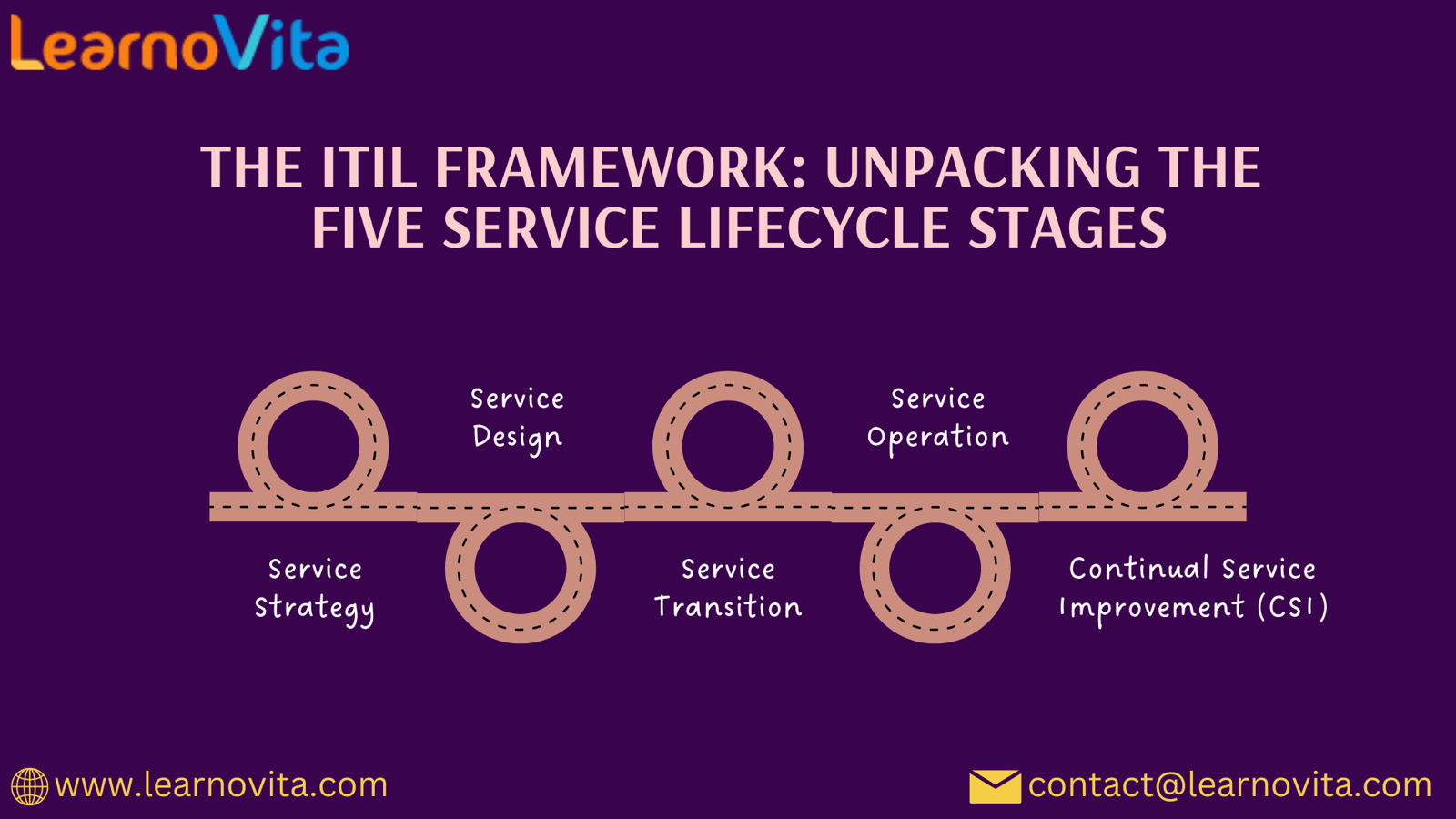Exploring ITIL: The Five Key Stages of the Service Lifecycle
In the ever-evolving landscape of IT service management (ITSM), the Information Technology Infrastructure Library (ITIL) has emerged as a foundational framework. ITIL provides a systematic approach to managing IT services, ensuring that they align with business goals and deliver value. At the heart of ITIL is the Service Lifecycle, which consists of five key stages. Let's explore each stage in detail.
If you want to excel in this career path, then it is recommended that you upgrade your skills and knowledge regularly with the latest ITIL Certification Course.

1. Service Strategy
The first stage of the ITIL lifecycle, Service Strategy, focuses on understanding and articulating the business objectives and needs of the organization. The primary goal is to define how IT services can contribute to achieving these objectives. Key activities include:
- Market Analysis: Identifying customer needs and market trends.
- Service Portfolio Management: Ensuring a balanced mix of services that deliver value.
- Financial Management: Budgeting and controlling the costs of services.
By laying a solid strategic foundation, organizations can ensure that their IT services are relevant and beneficial.
2. Service Design
Once the strategy is in place, the next stage is Service Design. This phase focuses on designing new services, as well as modifying existing ones, to meet the strategic goals established earlier. Key components include:
- Service Level Management: Defining and agreeing on service levels with stakeholders.
- Capacity Management: Ensuring that IT infrastructure can support the services.
- Availability Management: Designing services to ensure they are available when needed.
Effective service design leads to high-quality services that are reliable and align with user expectations.
3. Service Transition
Service Transition is the stage where designed services are moved from development into live operation. This phase emphasizes minimizing risks and ensuring that services are delivered smoothly. Important activities include:
- Change Management: Managing changes to minimize disruption.
- Release and Deployment Management: Planning and controlling the rollout of new services.
- Knowledge Management: Ensuring that information is shared and utilized effectively.
A successful transition ensures that services are implemented efficiently and are ready for use by customers.
With the aid of Best Software Training Institute programs, which offer comprehensive training and job placement support to anyone looking to develop their talents, it’s easier to learn this tool and advance your career.

4. Service Operation
Once services are live, the focus shifts to Service Operation. This stage is all about ensuring that services are delivered effectively and efficiently. Key activities in this phase include:
- Incident Management: Responding to and resolving incidents to restore service quickly.
- Problem Management: Identifying and addressing the root causes of incidents.
- Request Fulfillment: Managing service requests from users.
Effective service operation is crucial for maintaining customer satisfaction and ensuring business continuity.
5. Continual Service Improvement (CSI)
The final stage of the ITIL lifecycle is Continual Service Improvement (CSI). This phase focuses on ongoing enhancement of services and processes based on feedback and performance metrics. Key aspects include:
- Service Review: Regularly evaluating service performance against objectives.
- Process Evaluation: Assessing and improving processes to increase efficiency.
- Improvement Initiatives: Implementing changes based on identified opportunities.
CSI ensures that services remain aligned with business needs and continue to evolve in response to changing circumstances.
Conclusion
Understanding the five key stages of the ITIL Service Lifecycle is essential for organizations looking to enhance their IT service management practices. By strategically aligning services with business goals, designing them effectively, managing their transition, operating them efficiently, and continually improving them, organizations can maximize the value of their IT services. Embracing the ITIL framework not only enhances service delivery but also fosters a culture of continuous improvement within the organization.
- Questions and Answers
- Opinion
- Motivational and Inspiring Story
- Technology
- Live and Let live
- Focus
- Geopolitics
- Military-Arms/Equipment
- Security
- Economy
- Beasts of Nations
- Machine Tools-The “Mother Industry”
- Art
- Causes
- Crafts
- Dance
- Drinks
- Film/Movie
- Fitness
- Food
- Games
- Gardening
- Health
- Home
- Literature
- Music
- Networking
- Other
- Party
- Religion
- Shopping
- Sports
- Theater
- Health and Wellness
- News
- Culture

